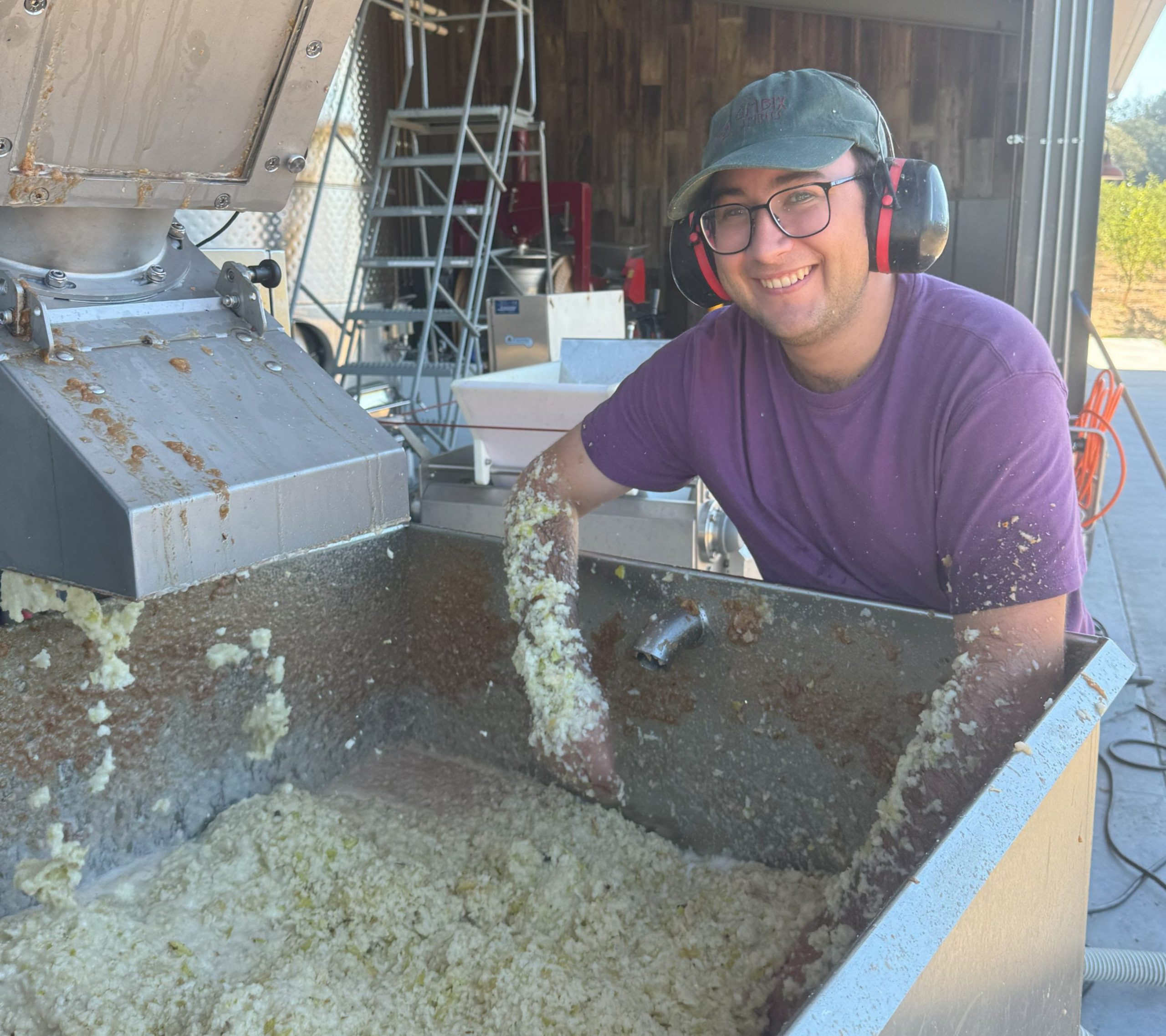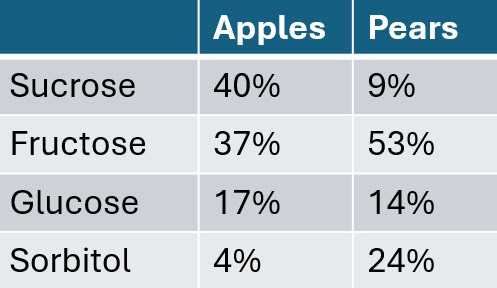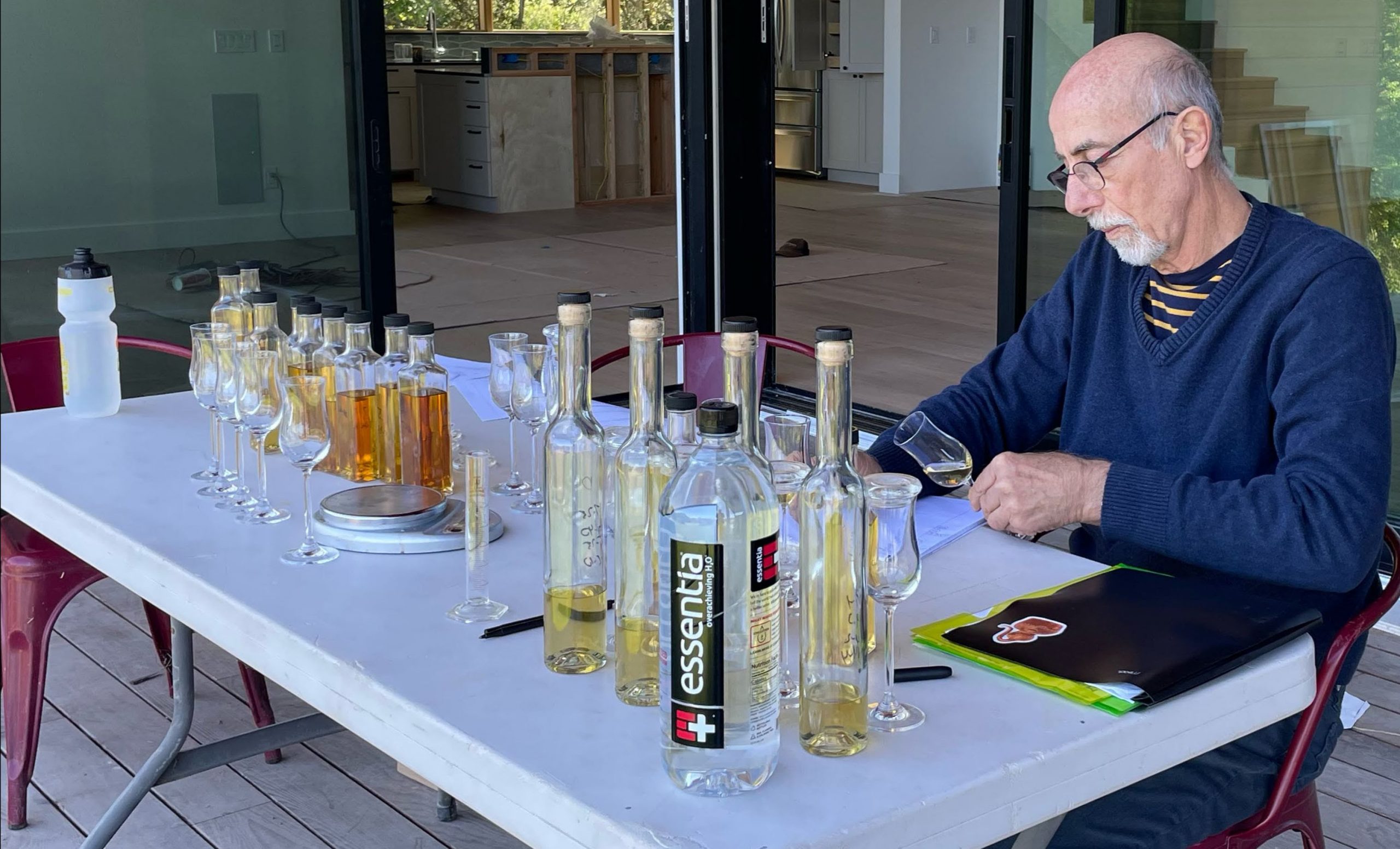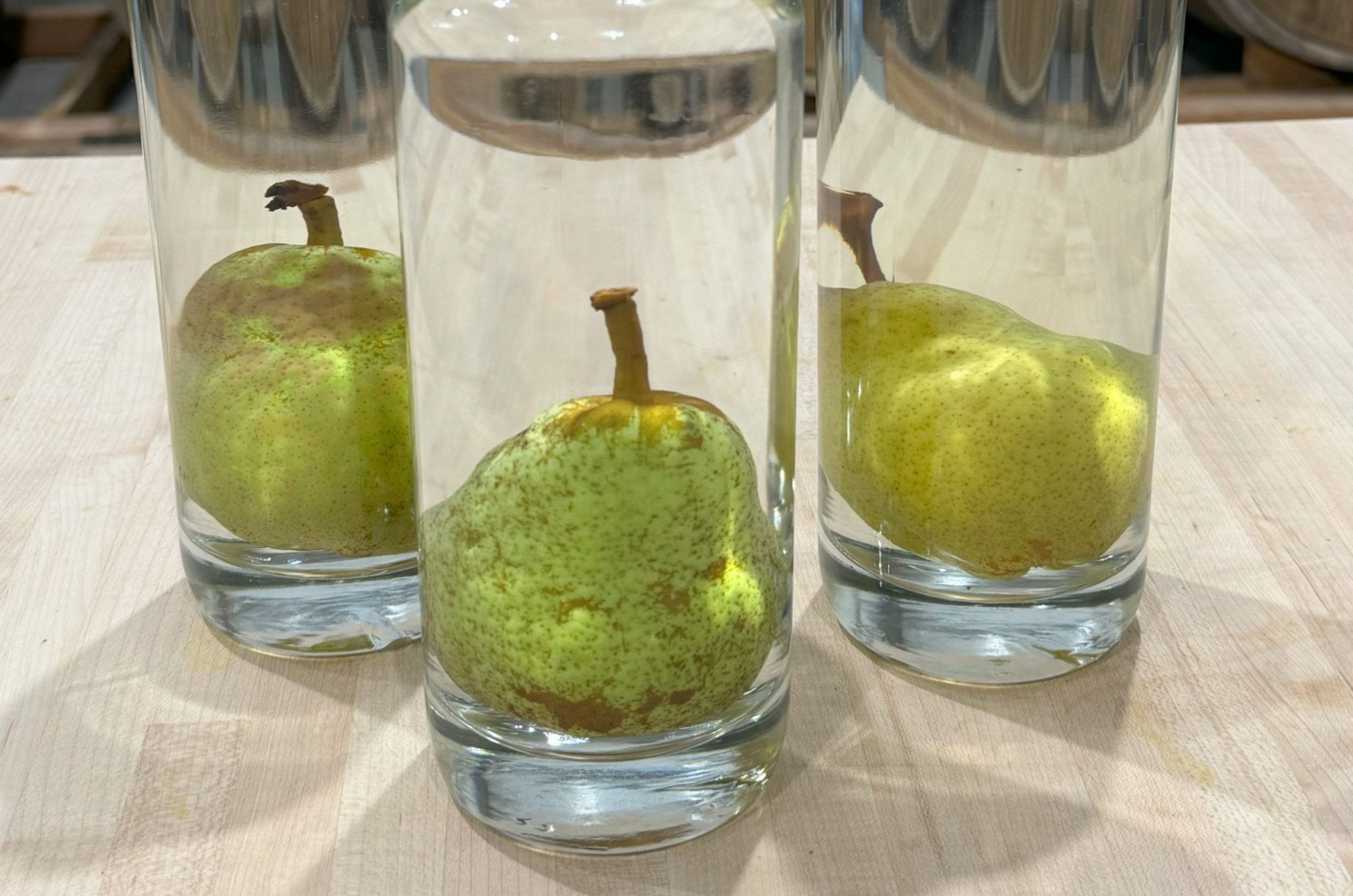In our Atomos project we are quickly finding that each type of apple we distill brings a unique experience. However many characteristics remain the same between apple distillates In general young apple spirits are sharp, spicy and assertive. In comparison European pear distillates come off the still much softer with a round smooth aroma and don’t have the attack that young apple spirits possess. This is why pear spirits (most notably Poire Williams) are often bottled with minimal aging and apple spirits typically require many years in barrels to smooth out their rough edges. In this newsletter we start an exploration to unravel why there such a difference in the nature of the spirits from these two similar pome fruit.

Apple Juice vs Pear Mash
Brandy starts in the orchard. If we can better understood how apples and pears are different we can better understand how their spirits are different. There are several interesting differences we find when we dive into the chemistry of apples and pears.
Sugars. The types of sugars in apples and pears are quite different. Pears have a dramatically higher sorbitol content than apples and a lower sucrose content. This is interesting because while fructose and glucose both ferment quite readily, sucrose is a more difficult fermentation and can result in new flavors developing while sorbitol does not ferment and will remain intact post-fermentation.

Acids. Apples have a relatively uniform and simple acid profile with 90% of apple acidity coming from malic acid and 10% from quinic acid. The organic acids found in pears is more varied and complicated. Many pears have more citric acid than malic acid, and also have substantial amounts of fruity flavored fumaric, ascorbic, and shikimic acids.
Volatile Organic Compounds (VOCs): Many of the unique aromas and flavors of fruit come from VOCs which is a broad class of esters (fruity), phenols (leather, spicy), terpenes (earthy and pungent), fatty acids, and more. Especially important to Poire Williams is the Ethyl 2.4 –trans, cis-decadienoate ester which is often called the “pear ester” and accounts for the majority of the VOCs in Bartlett pears however this ester is much lower in other pears and also found in many apples.
Technique: Apple brandy typically produced by pressing apples to make apple juice which ferments into cider. For pear brandy many only crush the pears and ferment a chunky pear mash complete with seeds and skins. This is done as a matter of convenience as well as flavor, because it is difficult to juice a soft ripe pear and it does impact favor in that more material is going into the still. The presence of skin & pulp in the ferment and still can also play a role in the smoothness of the end product.
Analyzing Apple & Pear Spirits
In the end we care about how the spirit smells, tastes and feels. To turn this qualitative sensory experience into a quantitatively chemical analysis a Gas Chromatography Mass Spectrometer (GC-MS) is able to identify and quantify the volatile components in a spirit.
There have been several studies (see references) that combine GC-MS with sensory analysis to determine the important chemicals in apple and pear brandy. A very short summary of the findings is that the chemical analysis confirms that pear spirits generally have more fruity esters and fewer spicy terpenes than apples and there is good correlation between sensory analysis of the fruity and smoother pear flavors and levels of certain VOCs measured in the spirits

What Does it All Mean?
We find ourselves a the end of this first phase of the investigation with very few answers and more questions than we started with.
We do find plenty of data on the differences between pear and apple spirits with pear spirits being softer and fruitier than apple spirits due to generally lower VOC’s, and higher ester (especially the pear ester) to terpen ratios.
We also come away with an ever stronger belief that the type of apple or pear we use is one of the most important factors when we design our spirits with 10x variations in sensory and chemical composition between different types of apples and pears.
The question of why is this the case and how we use the data to develop new products remains elusive and a topic we will continue to explore and share.

